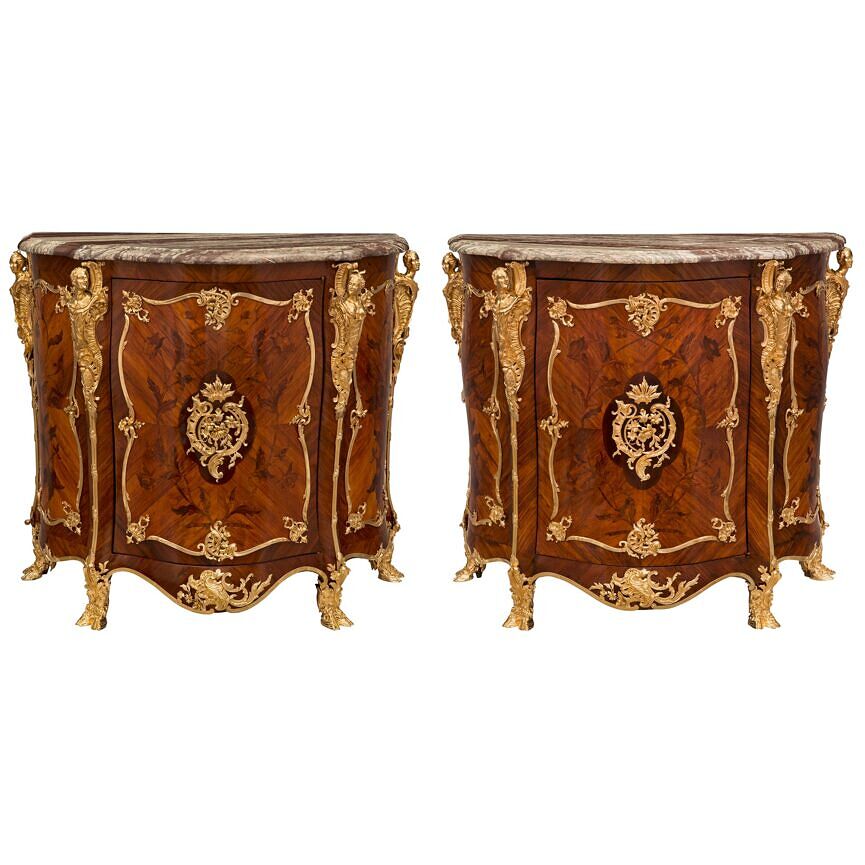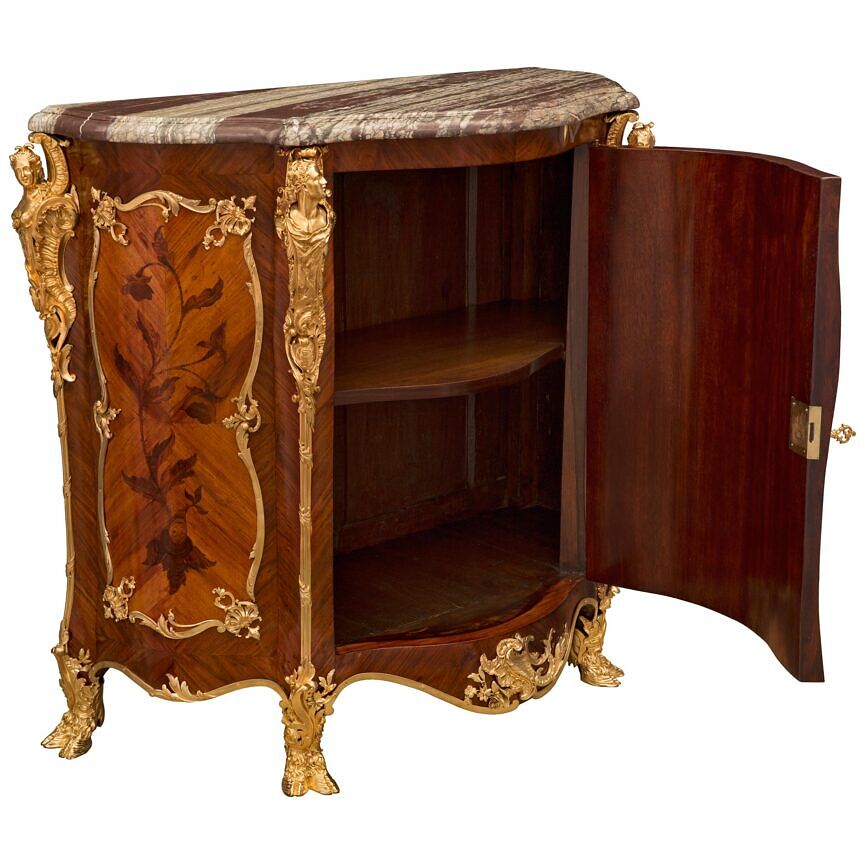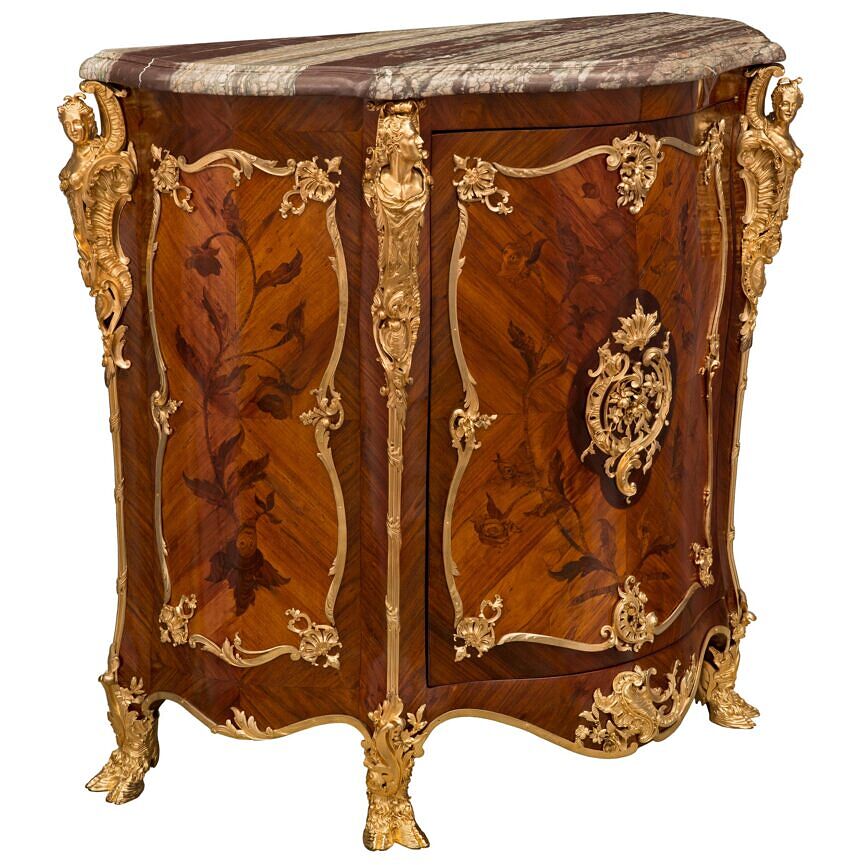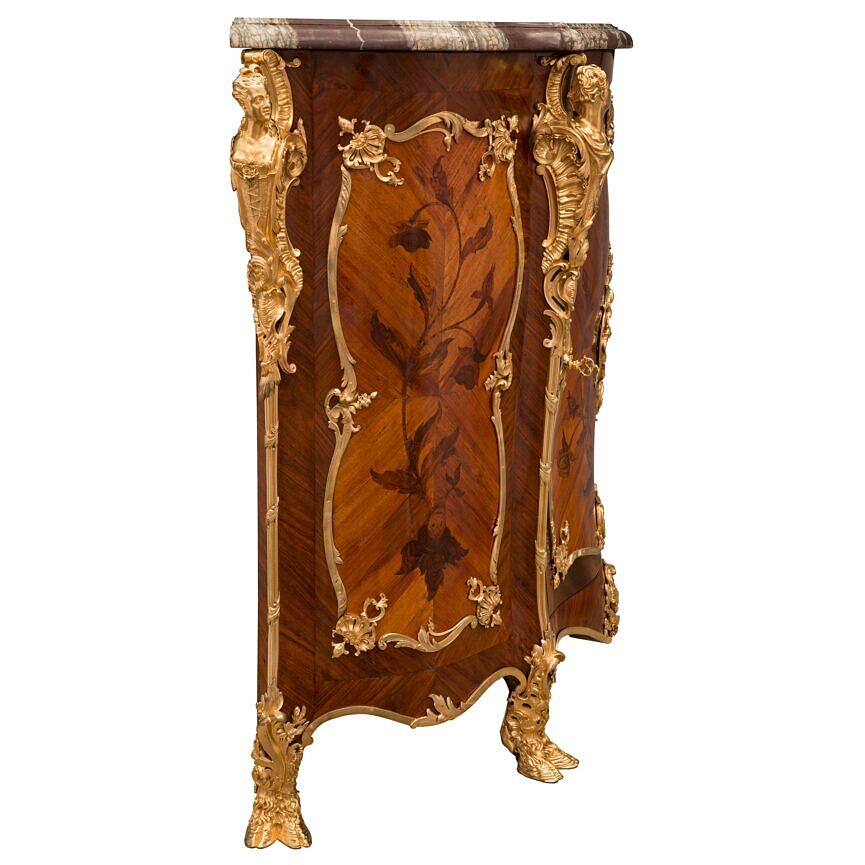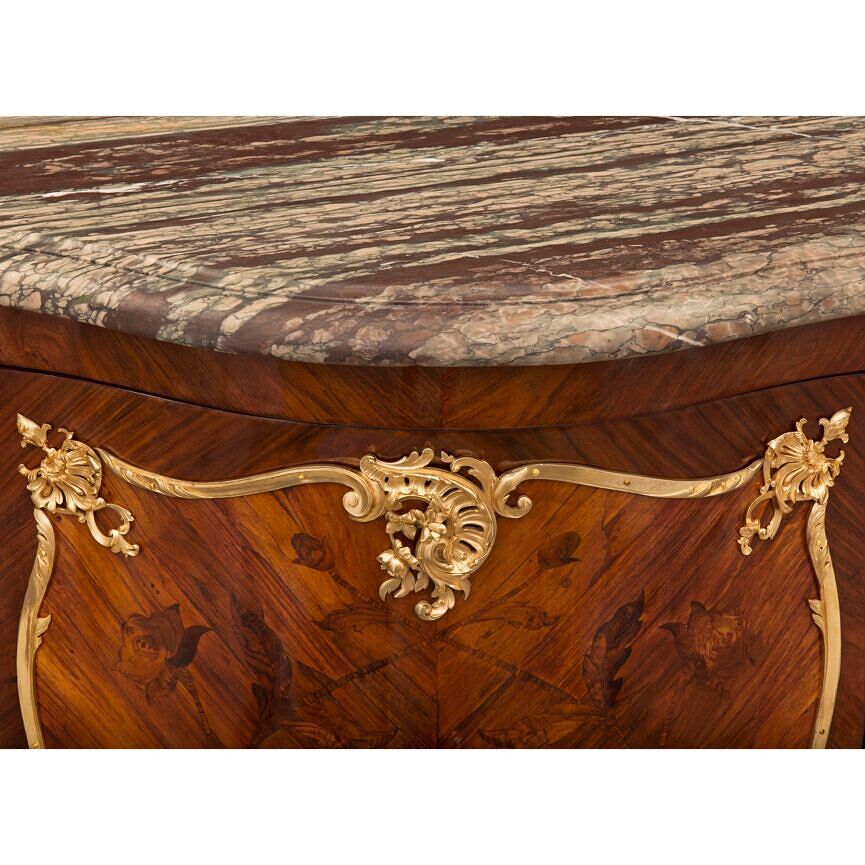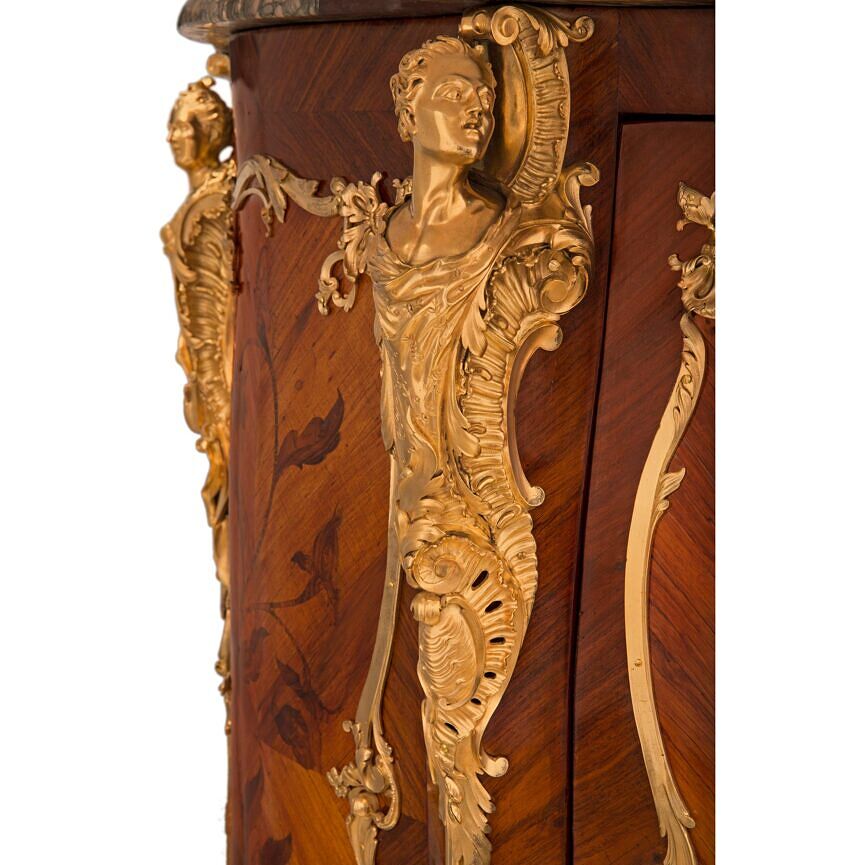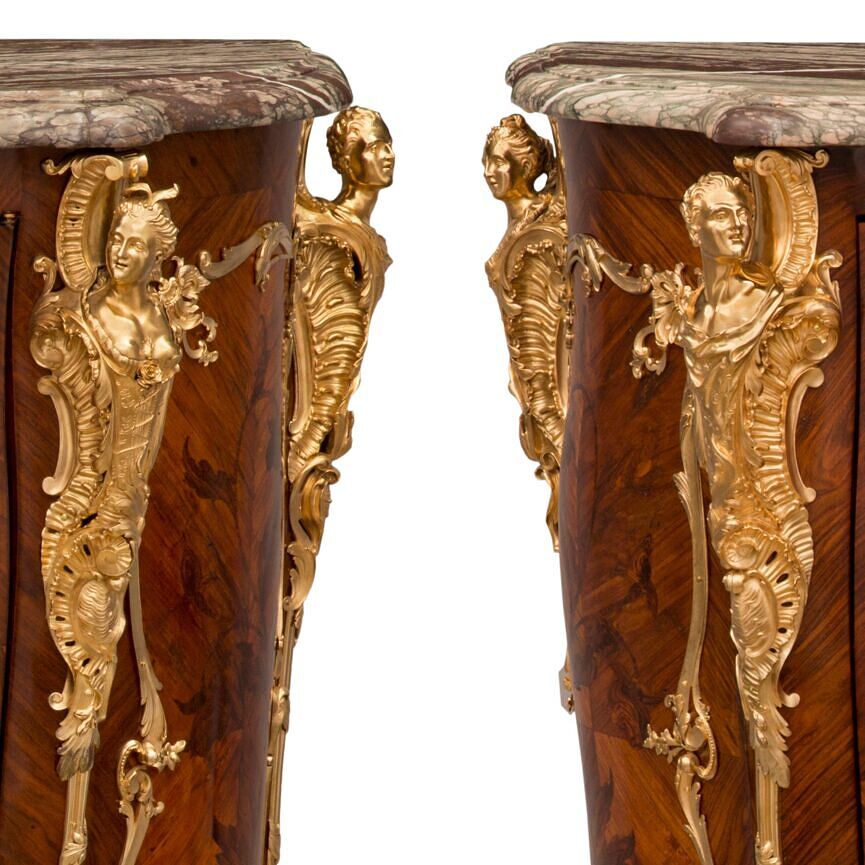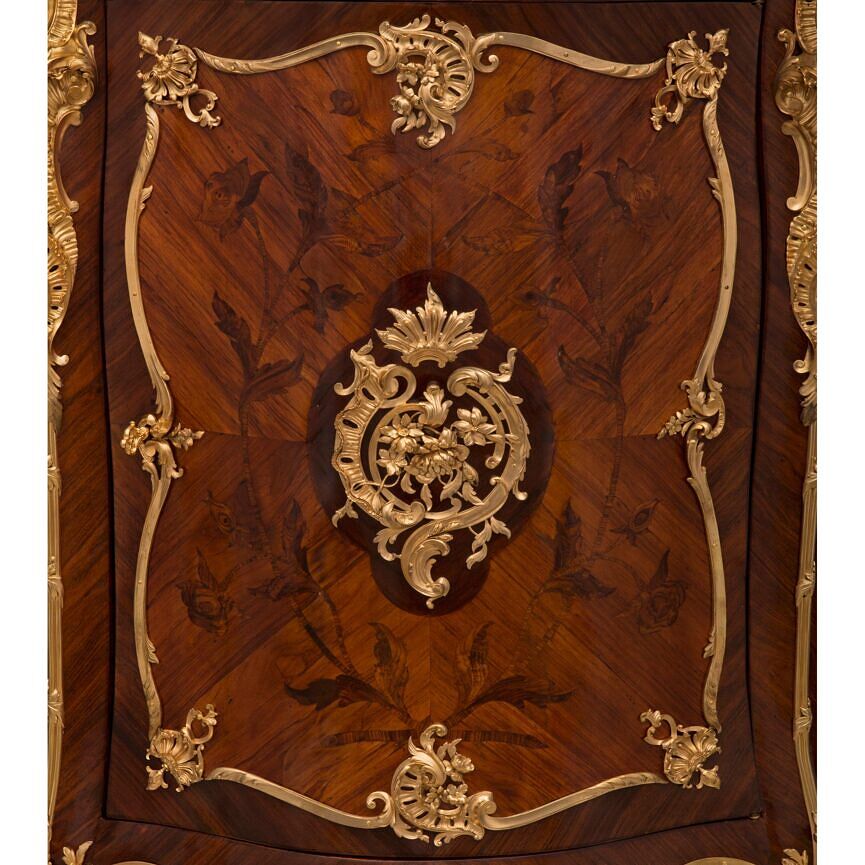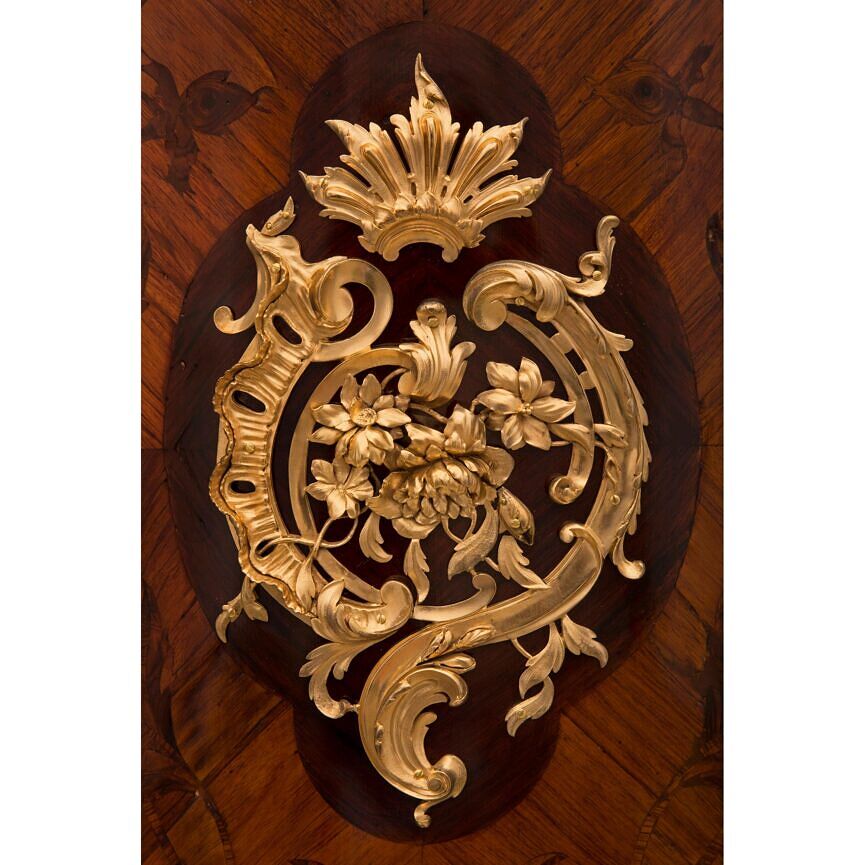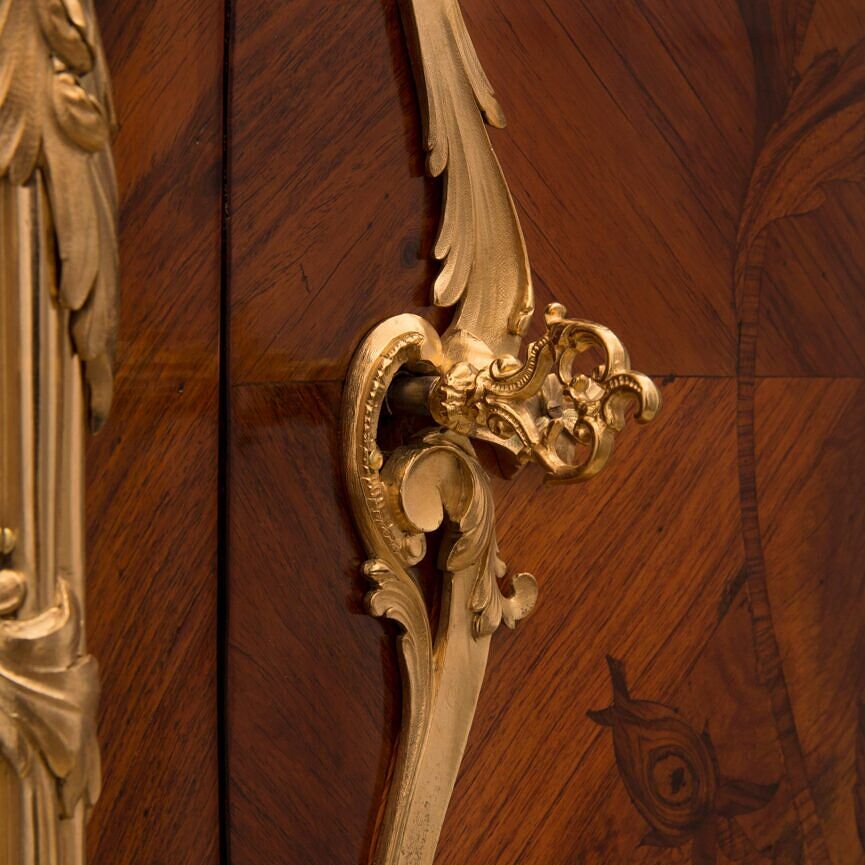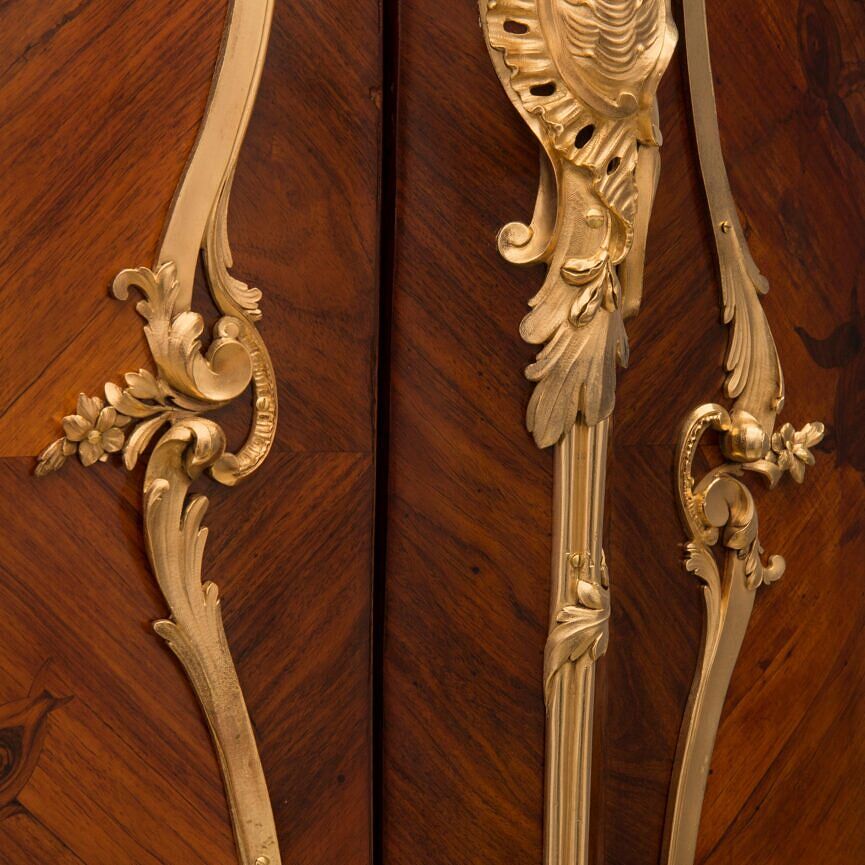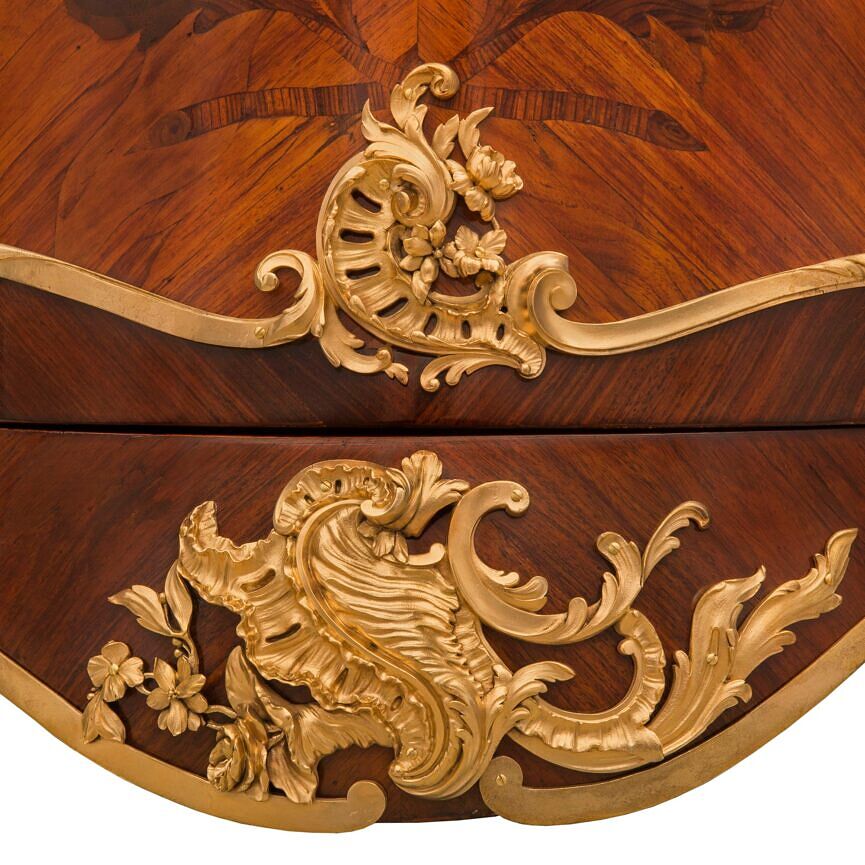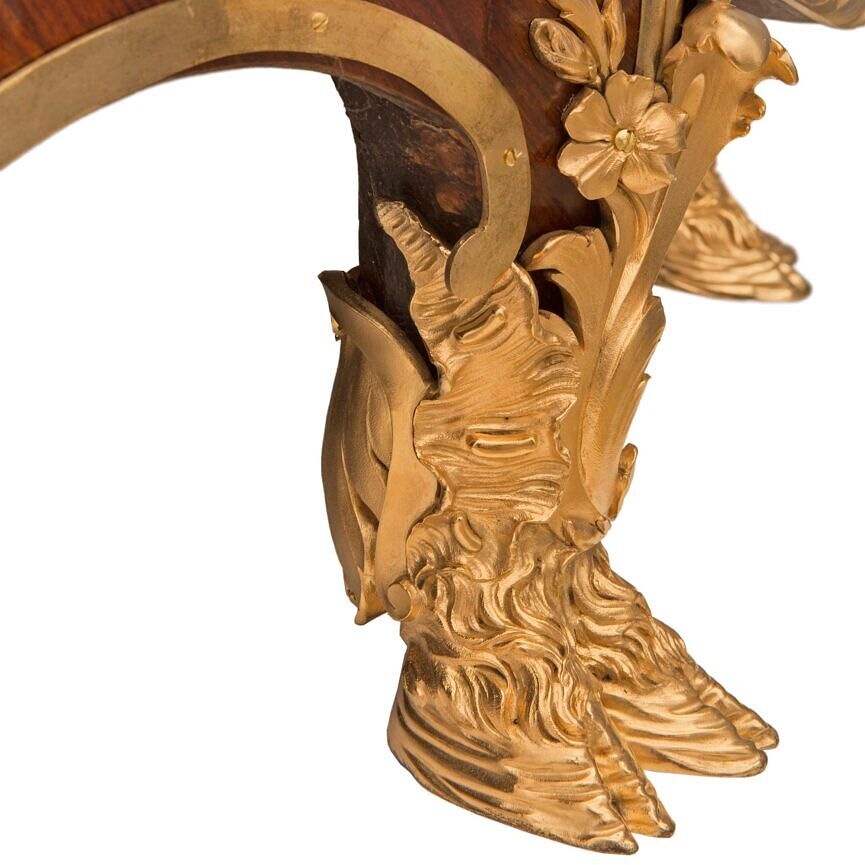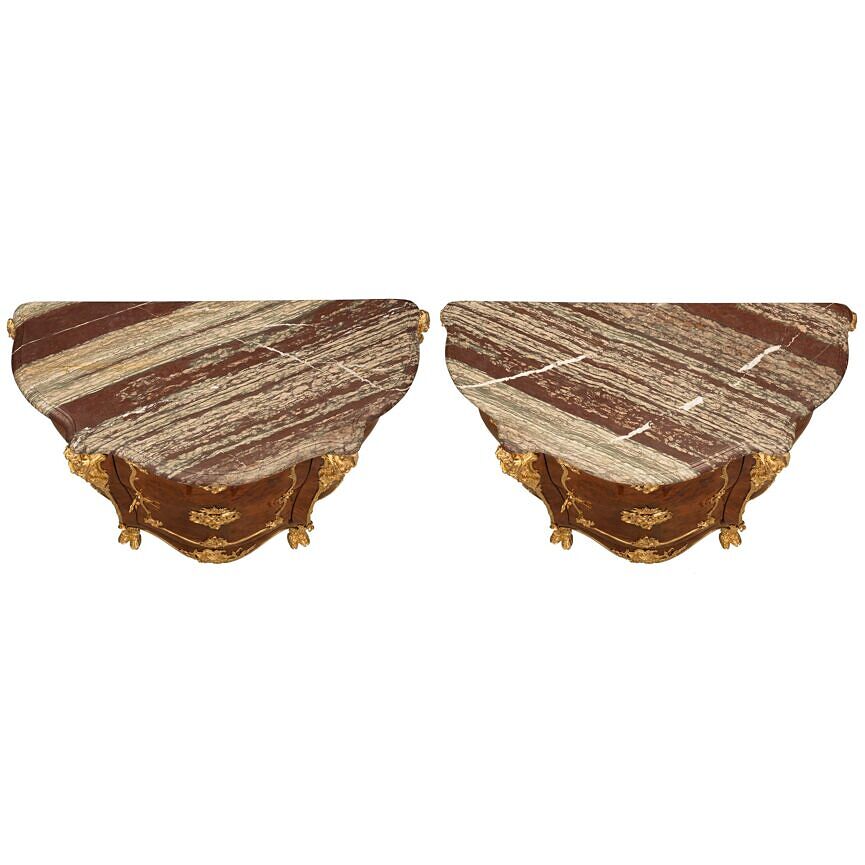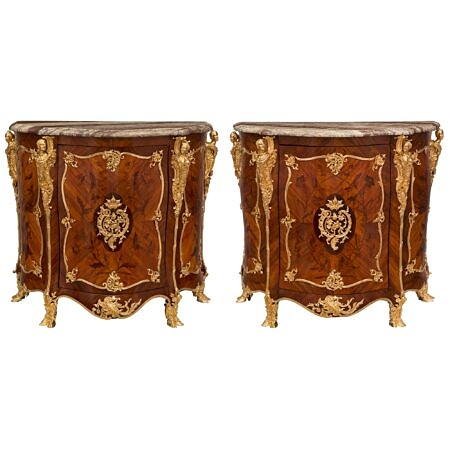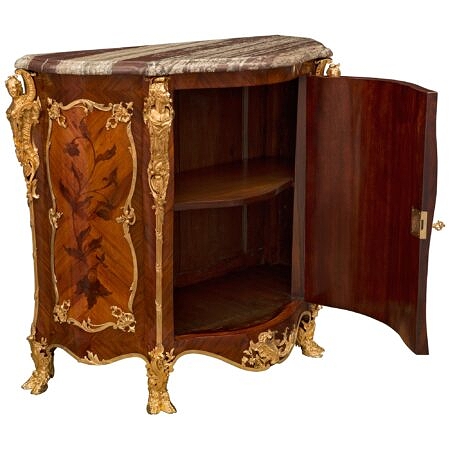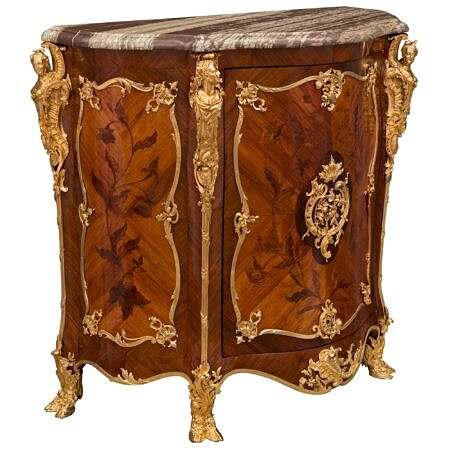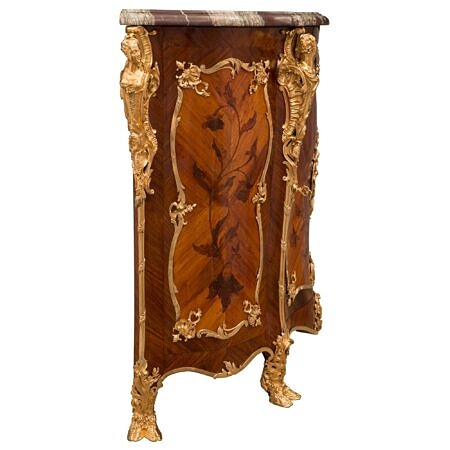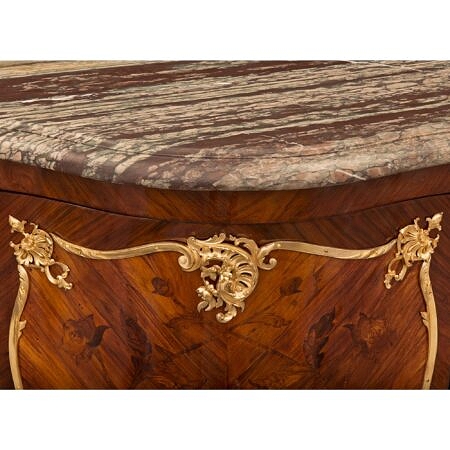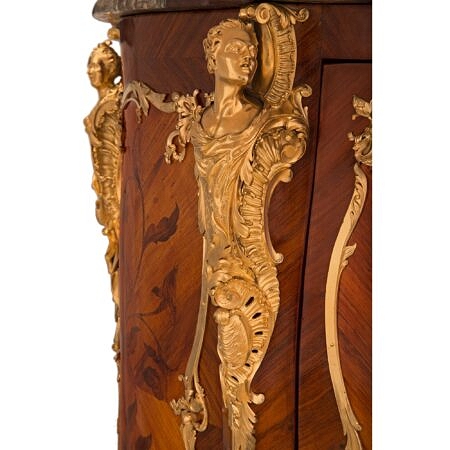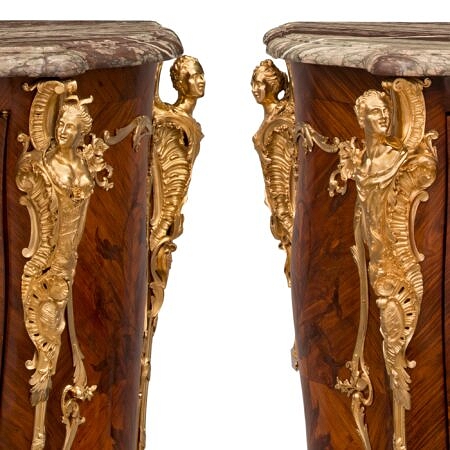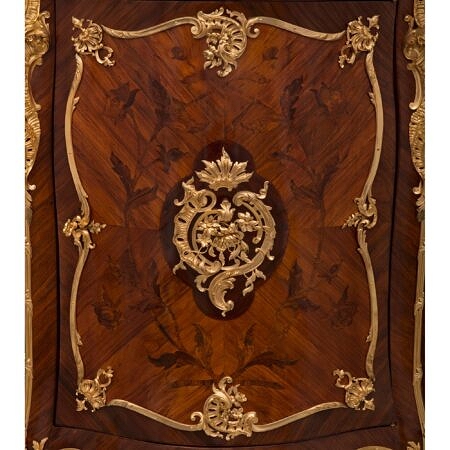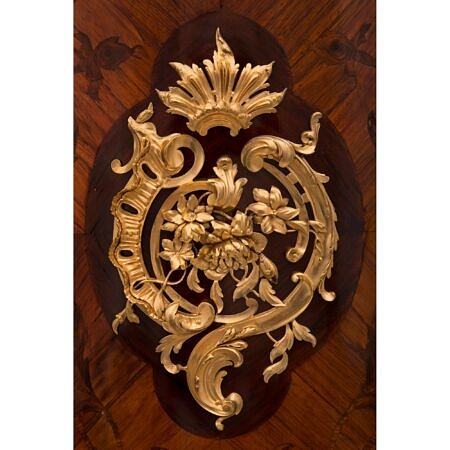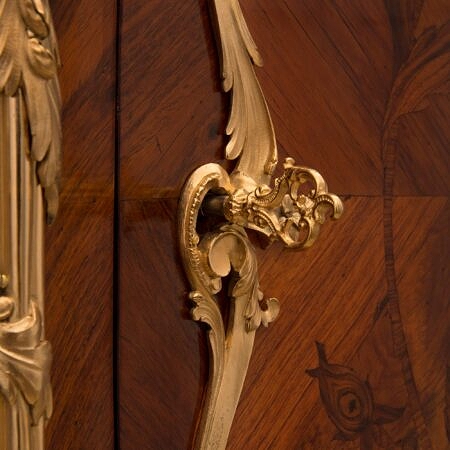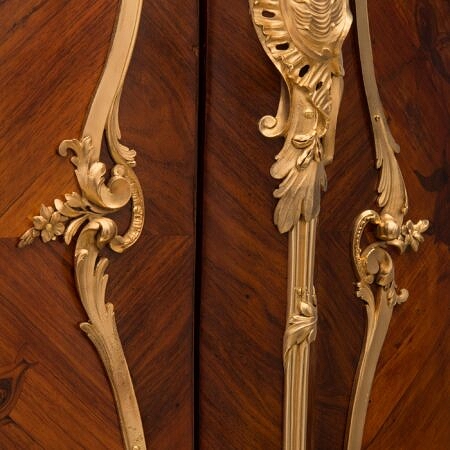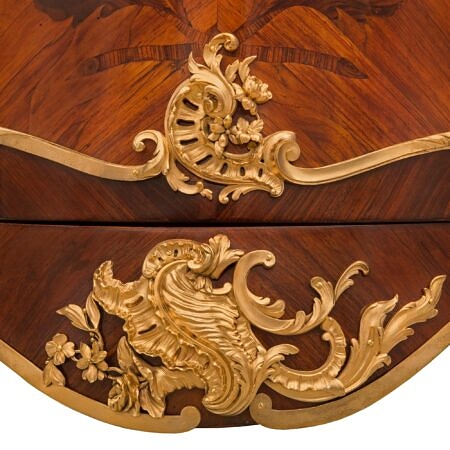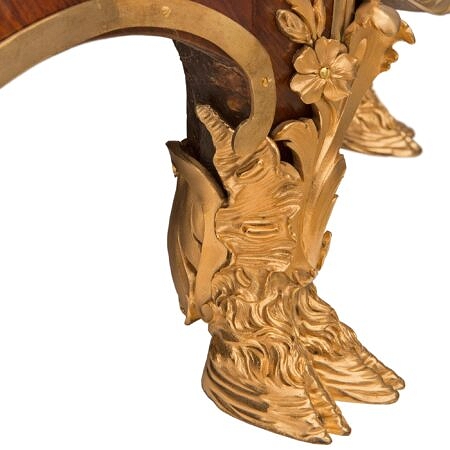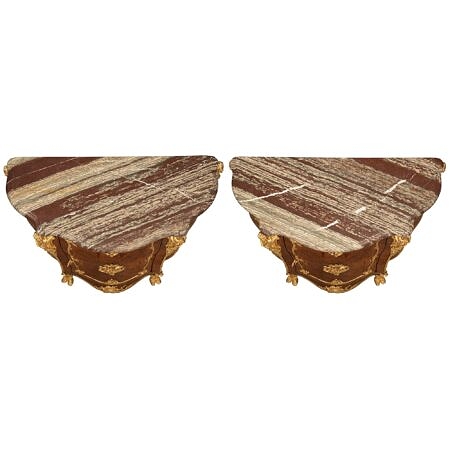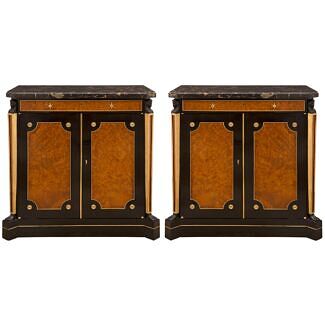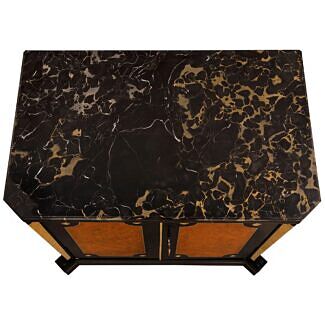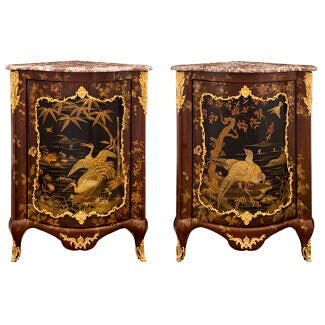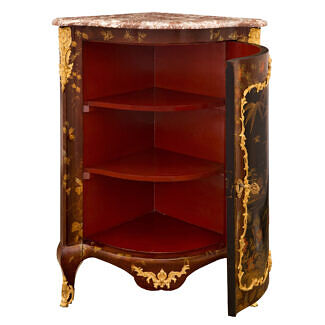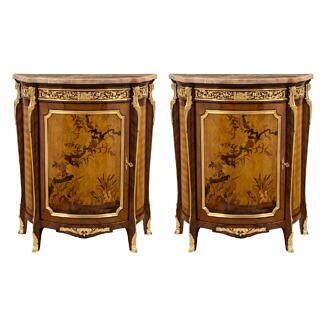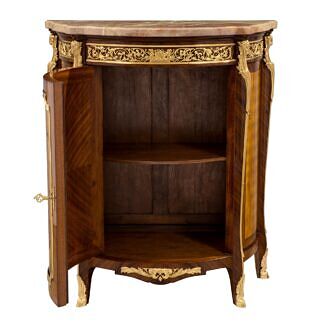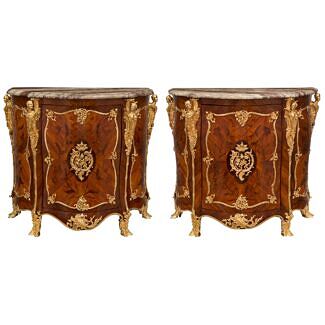A pair of French 19th century Louis XV st. Belle Époque period Kingwood, Tulipwood, ormolu, and Campan Rubané marble cabinets attributed to Joseph-Emmanuel Zwiener
Sorry, This item has sold
A sensational and extremely high quality pair of French 19th century Louis XV st. Belle Époque period Kingwood, Tulipwood, ormolu, and Campan Rubané marble cabinets attributed to Joseph-Emmanuel Zwiener. Each cabinet is raised by impressive and very unique double hoof... — Read More
A sensational and extremely high quality pair of French 19th century Louis XV st. Belle Époque period Kingwood, Tulipwood, ormolu, and Campan Rubané marble cabinets attributed to Joseph-Emmanuel Zwiener. Each cabinet is raised by impressive and very unique double hoof feet with intricately detailed fur and beautiful scrolled foliate movements in a rich satin and burnished finish. An elegant ormolu fillet extends along the arbalest shaped frieze centered by a stunning pierced scrolled foliate ormolu mount. Most decorative fluted chutes tied with delicate acanthus leaves lead upwards to exquisite richly chased corner mounts of beautiful maidens draped in wonderfully executed flowing garments and handsome men amidst exceptional scrolled foliate designs. At the center is a single door decorated with masterfully inlaid foliate marquetry framed within lightly curved foliate ormolu bands with exquisite pierced seashell mounts at the corners and spectacular pierced central reserves with stunning foliate gadroons and charming finely detailed blooming flowers. The doors open to reveal one single shelf and all original hardware. Above the original female and male ormolu mounts are the original Campan Rubané marble tops repeating the elegant scalloped shapes of the cabinets with finely mottled borders. — Read Less
- Item # 11966
-
H: 41.5 in L: 47 in D: 22 in
H: 105 cm L: 119 cm D: 56 cm
- France
- 19th Century
- Kingwood, Marble/Stone, Ormolu, Tulipwood
- Belle Époque Period Read More, Louis XV st. Read More
- Joseph-Emmanuel Zwiener Read More
Related products
-
# 11591 - H: 31" L: 33" D: 19"
-
# 11089 - H: 43" L: 37" D: 18"


